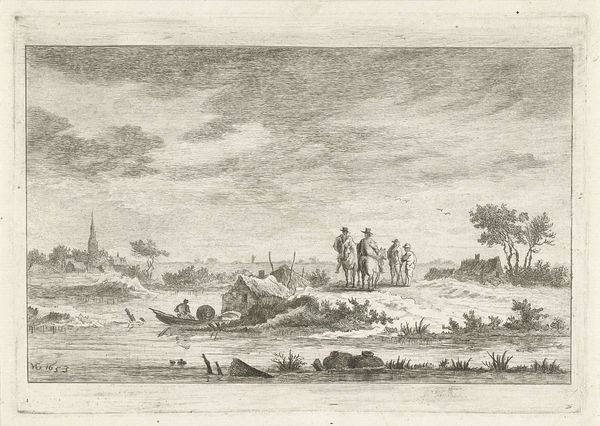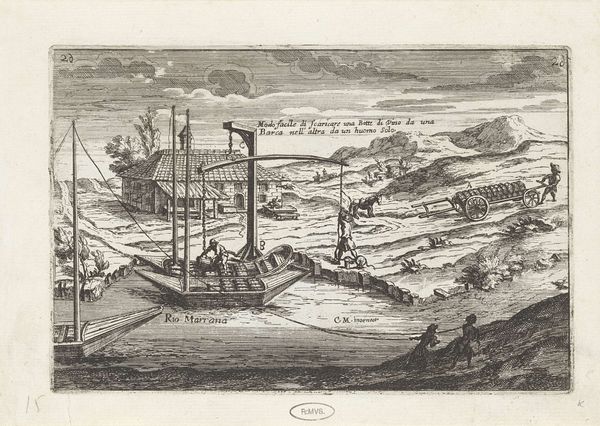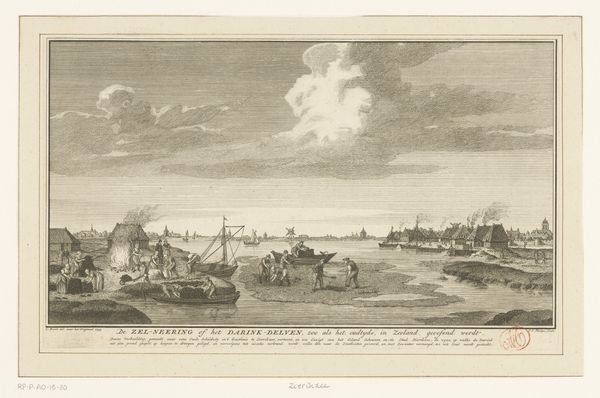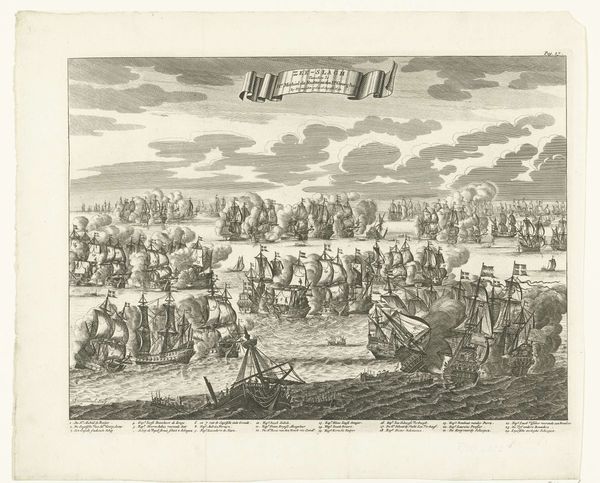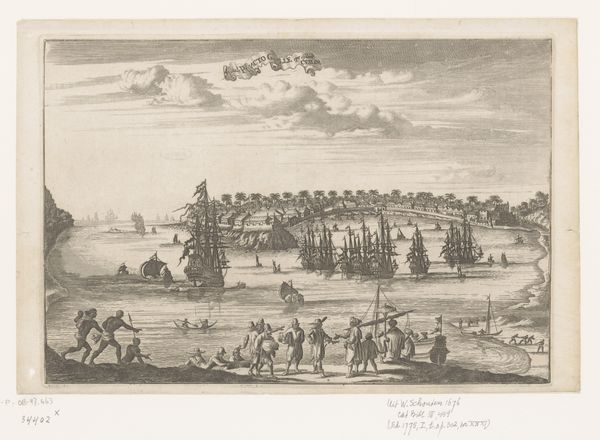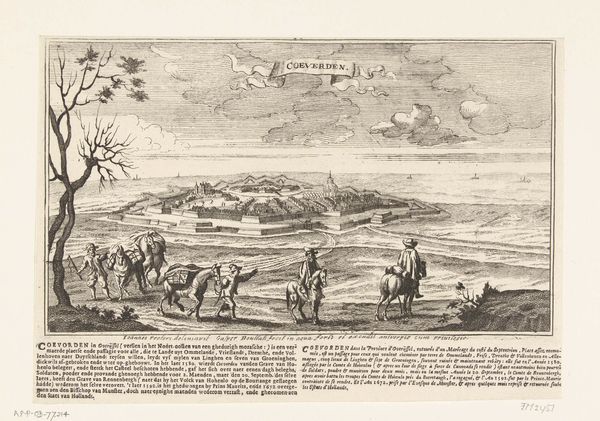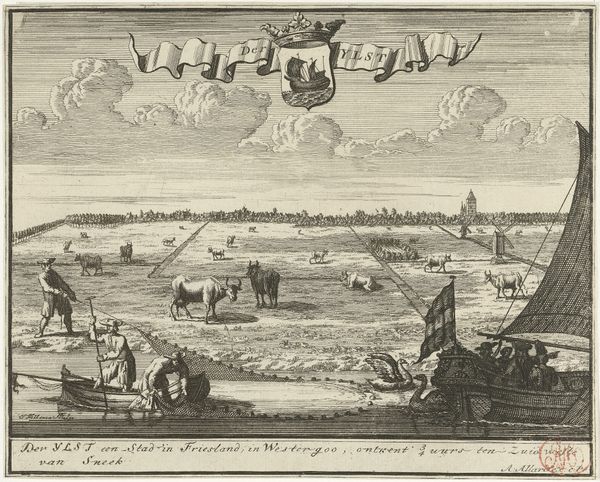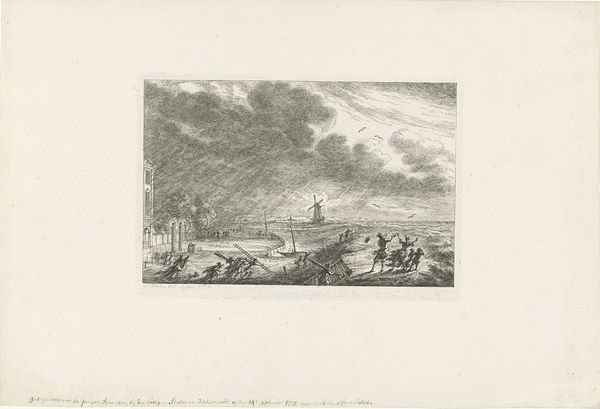
Slachten van de potvis gestrand tussen Zandvoort en Wijk aan Zee, 1762 1762
0:00
0:00
johannesswertner
Rijksmuseum
Dimensions: height 262 mm, width 412 mm
Copyright: Rijks Museum: Open Domain
Editor: Here we have Johannes Swertner's 1762 engraving, "Slachten van de potvis gestrand tussen Zandvoort en Wijk aan Zee," depicting the butchering of a beached whale. I'm struck by how the artist used lines to convey so much detail. What elements of its visual composition stand out to you? Curator: Consider the arrangement of figures. Swertner's methodical use of line—see how it dictates form, delineates light, and carves out depth through varied densities. Focus on the foreground and its detailed portrayal of human figures; they contrast with the whale. The sky above imitates shapes present in the whale on the horizon, mirroring one another in texture and scale, a technique commonly deployed to create harmony within landscapes. Editor: It seems like every line, every mark, serves a purpose. But, what about the blankness of certain areas? Like the sea meeting the sky - is that meant to emphasize certain aspects? Curator: Precisely. That austerity throws the focus back to the activity onshore. Swertner balances the negative space against intricate human endeavor. Consider how his technique reveals that even something tragic, like a whale's demise, becomes an intricate tapestry of action when seen through the eyes and actions of people. What could this say about humanity? Editor: I see. So, the way the figures and lines are organized speaks more profoundly about how humans behave towards even tragic instances. Thank you for offering a totally new perspective on it, curator! Curator: Certainly. Attending to visual architecture and material considerations often delivers fascinating rewards, a process, no doubt, that will encourage novel insights!
Comments
No comments
Be the first to comment and join the conversation on the ultimate creative platform.

